Wish you could have the gift of hindsight before you started blogging? Today you can with these 27 hard learned lessons by top travel bloggers.
Article Contents
- Consider seasonality when choosing your niche and setting your expectations.
- A travel blog is not a diary. Readers want stories and useful information.
- I should have outsourced to the experts rather than try to do it all.
- Treat your blog like a business from day one.
- Start your travel blog before you think you need to.
- Develop a content strategy to help you write posts that actually rank.
- Create a content workflow so you can keep on top of multiple projects.
- Don't try to spread yourself into too many areas all at once.
- Start with a WordPress theme that is light and speed-friendly.
- Keep the number of plugins on your website to a minimum and be sure to check the impact of these plugins.
- I had no idea how much maintenance was required to keep your blog running!
- Set your default blog post permalink settings to follow the domain URL directly from day one.
- Resize, rename, & compress images BEFORE you upload them to your website.
- Life as a blogger became so much easier once I learned to make SEO my top priority!
- Writing good content is only half the job. The other half is working the algorithms!
- When I started out, I made the mistake of wanting to be a lone wolf.
- Page views don't dictate when you can start pitching.
- Don’t neglect your internal linking. It’s the fastest and easiest way to improve SEO!
- Earning backlinks is the gamechanger when it comes to ranking your posts.
- Learn in depth keyword research so you can target multiple keywords for every post you write.
- Don’t accept crappy paid guest posts.
- Having a large social media following does not necessarily generate consistent website traffic.
- It took me far too many years to use local signs / tourist boards to help with research.
- Read contracts carefully and know the value of what you agree to with brand partnerships and collaborations.
- Have a useful newsletter opt-in freebie from the day you launch.
- Collab post can change the way you build links for your blog.
- Write the kind of e-mails that you'd like to read when you do cold outreach.
Nothing beats hands on experience, especially when it comes to blogging. I'll always recommend hitting the ground running and making mistakes along the way as opposed to trying to learn everything there is about the business before you begin blogging — because that's impossible. The industry is constantly evolving and the veteran bloggers are learning new things every day just like you.
That being said, there are always lessons to learn from other bloggers' experience. Today we're tapping into the collective hindsight of top travel bloggers to learn what they wished they knew at the very beginning, before they started blogging. These lessons will hopefully help you avoid costly and time consuming mistakes that new bloggers are often guilty of.
These lessons are in no particular order so be sure to scroll through to the end for some great ones. Thank you to everyone who contributed to this massive resource.
After you finish reading this post, check out our Travel Creators Success Kit for more resources on how to grow your travel blog, and consider joining the Travel is Life Creators community to learn and connect with other travel bloggers around the world.
“Consider seasonality when choosing your niche and setting your expectations.”

Steph Edwards | themediterraneantraveller.com
When learning about SEO it's easy to imagine your traffic consistently trending up as Google starts to rank all these new posts you’re churning out. Keep writing and it’ll keep rising, right?
Well, sometimes. I’d been focusing so much on search volume that I had considered traffic trends when forecasting (wildly optimistically) my first year growth and potential earnings. It’s such a buzz when you start ranking but my first low season was a shock to the system.
Depending on your chosen niche, you may or may not be able to balance this out with different topics and keywords. My site is about regional travel so all of my posts tend to have similar traffic trends – up for half the year and down for the other half! It’s quite a rollercoaster.
After a few years I have enough data to feel more confident about the low season but it definitely required a leap of faith in the beginning. And conservative financial planning.
Another downside is that it can make the feedback loop even longer. For example, if an article starts ranking just as the demand is tailing off, I might not get any meaningful data on that article for another 4-5 months.
“A travel blog is not a diary. Readers want stories and useful information.”
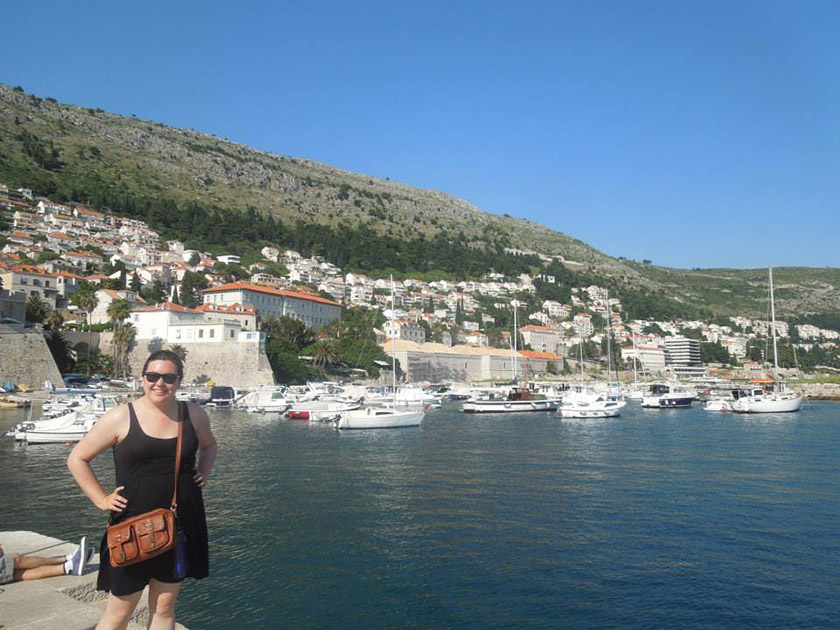
Riana Ang-Canning | teaspoonofadventure.com
When I first started my travel blog, I made the mistake of treating it like a diary. I would write minute-by-minute descriptions of my day and every single thing I did, saw, thought or ate. A lot of my posts were just endless paragraphs that started with “Then I did this…” or “Next I did this…” I had no idea how to share my travels without recapping every single thing that happened.
For a few years, I didn’t realize the mistake I was making. My blog was just something I posted to for fun, and my parents were my primary readers. It wasn’t until I began taking my blog more seriously in 2018 that I actually stopped to think, “What do my readers want to read? What would my readers find useful?”
With those questions in mind, I was able to craft blog posts that had intention and served a purpose. I learned how to edit out the details that didn’t matter and tell a cohesive story, instead of just the events of my day. I focused on providing valuable information in a digestible way, and creating a voice that was engaging.
I wish I had thought more about my readers when I was just starting out, even if I didn’t have many readers to begin with. Writing for someone changes how you write and helps you refine your storytelling skills while you’re building up a bigger audience. I also find a trip stretches a lot farther when you look at all of the different stories you can tell from it. Instead of one diary entry describing how you spent each hour in Morocco, you can write a week-long itinerary post, a packing guide for Morocco, a list of dishes to eat, a photo essay of the beautiful Moorish architecture, and so much more!
“I should have outsourced to the experts rather than try to do it all.”
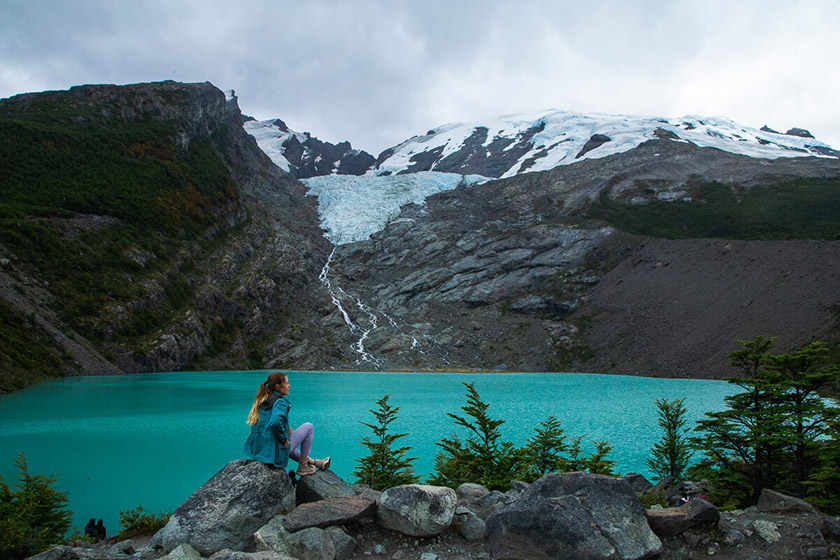
Erin Mushaway | solsalute.com
Building a website is a lot of work, and when you’re just starting out, it comes with a steep learning curve. I know it can be overwhelming and for me, even 5 years in, it still is sometimes.
When I started my blog, I poured through blogs about starting blogs, watched video tutorials, and combed through Facebook blogging groups for advice. I wanted to learn how to do it all myself and for the most part, I did that. I wrote and I studied up on SEO, but when it came to the technical details I found I was spending more time trying to fix things I knew nothing about than actually writing content.
This is when, out of frustration, I decided to migrate my entire website from WordPress to Squarespace. Squarespace would take care of all that nonsense for me and I could focus on what matters, the content… or so I thought.
In the end, I ran into a lot of limitations on Squarespace and two years later I migrated my website back to WordPress. It took months of work that would have been unnecessary had I simply hired experts to help me on WordPress in the first place. I recommend asking people you trust for recommendations. Blogging groups and your theme's group on Facebook are excellent resources. I’d avoid apps like Fiverr where you can’t be confident in the quality of someone’s work.
It can be hard to part with the money but sometimes you have to invest in yourself. When doubting whether to hire out a task, do the math on the number of hours it will take you to learn it and do it well. Can you make more money by using those same hours to create content? As the old saying goes, sometimes you need to spend money to make money.
“Treat your blog like a business from day one.”
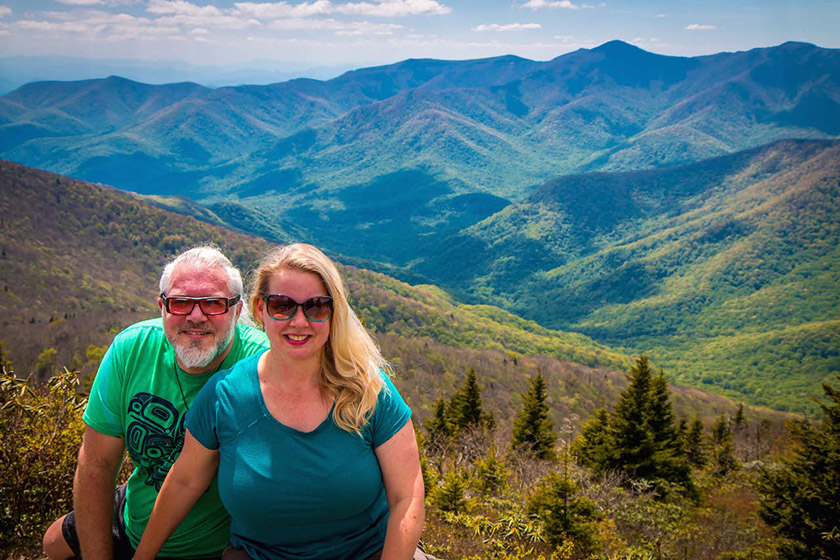
Bret Love & Mary Gabbett | blueridgemountainstravelguide.com
When we first started dipping our toes into the water of travel blogging back in the summer of 2010, it was a very different game.
Back then blogging was not anywhere close to becoming the hugely profitable industry it is today. Pinterest was brand new, and Instagram had not even been invented yet. There was no KeySearch to help bloggers with keyword analysis, and no major ad networks from which we could profit (other than Google ads, which paid pennies compared to what bloggers make today).
It really felt like the wild, wild west, because nobody really knew the field's limitations, or possibilities.
There were a few things we did right in terms of launching our first blogging business, such as doing a market analysis to understand our competition (or lack thereof), developing a solid branding strategy, and outlining some basic growth objectives. But because social media marketing and SEO were still relatively new, rapidly changing fields at the time, it was very difficult to create any sort of sound business plan, like a traditional entrepreneur would do.
The truth is, we really had no idea in those early days how we would ever monetize our site, how content marketing would work, or what a successful blogging business would even look like. So we winged it, made it up as we went along, and somehow managed to travel the world and make enough money to pay our bills (and, eventually, save a little). But there was a very steep learning curve.
But when we launched a new regional travel site in January of 2020, we knew how to create a sound blogging business strategy from the get go. Despite launching two months before a global pandemic, we managed to turn a profit in the first 10 months, and it is currently on the verge of out-earning our 11-year-old site for the first time. So while it is possible to start a travel blog without mapping out a step-by-step plan, we've seen a much greater ROI from mapping it all out before the first post was even written.
“Start your travel blog before you think you need to.”
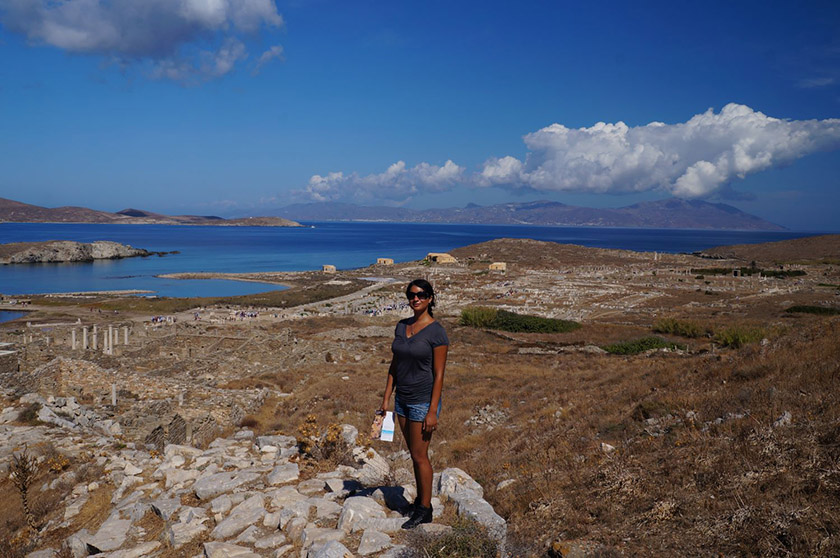
Roxanne de Bruyn | farawayworlds.com
Before I started my travel blog, I had no real idea of how long it takes for a new website to get traction. I’d worked with websites before, but none of them were brand new. I was surprised to learn that it often takes around 6-9 months for articles on a new website to start ranking on Google and for your SEO efforts to bear fruit.
When I started my first travel blog, I had a long-term trip planned and, as a writer, I decided to document my travels. However, for most of my trip my readership was relatively small and mostly came from social media. It was only towards the end of my trip when I started to get a good amount of traffic to my website from a range of sources.
My advice is to start your travel blog early – long before you head off on a big trip. This gives you time to find your voice, build your profile and have some traffic before you go. New bloggers can feel uncomfortable starting a travel blog if they haven’t travelled widely yet, however it’s definitely possible to start a travel blog using the expertise you already have. If in doubt, start writing articles about where you live. Locals know all the best places to go and can often write richer, high quality content than visitors can. In fact, many well-known travel publications prefer to hire local writers where possible.
Regardless of what you choose to write about, starting your website early will give you a head start in the blogging game. Building a successful blog takes time and the longer your website has been around, the better. You’ll also have experience blogging and a better idea of what you may want to cover as you travel and what equipment you need to take with you. If you’ve worked hard, you may even have some income from your website before you go. At the very least, you’ll have some evidence of your success which will make it easier to get sponsored trips or activities during your trip.
“Develop a content strategy to help you write posts that actually rank.”
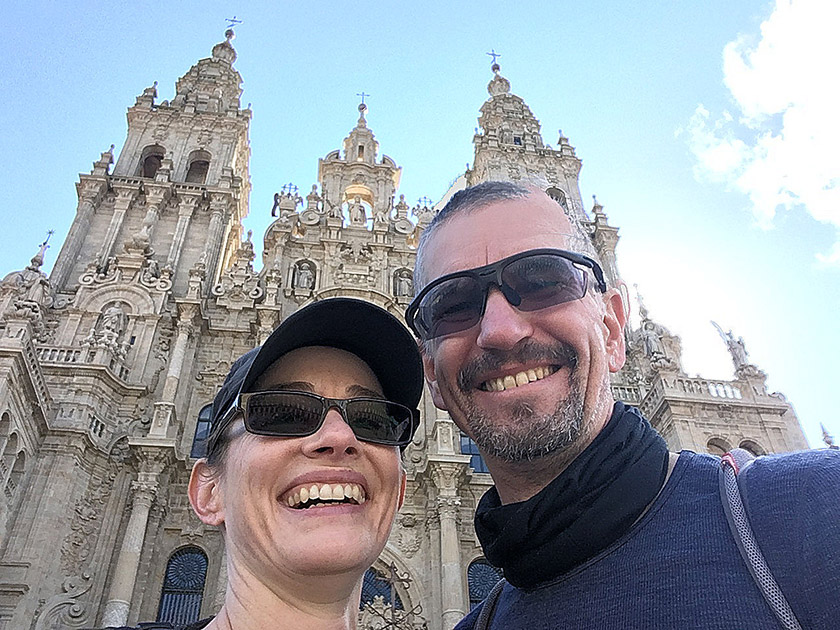
Paul Ryken | minimalistjourneys.com
If you compare one of our early blog posts and with a more recent one, you'll notice a big difference in format, length and most importantly value. We started our blog initially to help us digest our experiences and keep our loved ones in the loop. While we enjoyed writing those journal-style posts, they were never designed to help readers with their travels or optimised to rank in search engines.
The style and structure of our posts has changed over the years. Through a lot of trial and error, and by adopting a more structured approach to the way we plan, develop and manage our content, our posts now rank in Google search results.
Here are some key rules we wish we had known when we started:
- Rule 1: Determine your niche. Choose something that you enjoy writing about and that is part of your life/travels anyway. Think about problems you've encountered on your travels, and how your learnings and experiences can help solve those problems for your readers and the destinations you write about.
- Rule 2: Understand your target audience. Who are you writing for? What do they need help with? Google Analytics will help you understand where your readers come from, their gender, age group and how they found your site. So make sure you have it installed from day one.
- Rule 3: Keep an ideas log. What questions do you have before and while you visit a country? What steps do you take before booking an experience? These questions will help you identify topics for future blog posts and help you structure your posts.
- Rule 4: Use your niche as the filter for your ideas. If your niche is about travel advice for single females, it would be illogical to write an article about air travel with kids. If you want to write about something outside your niche occasionally, post it on Medium instead or offer to write a guest post for another blogger (with a guaranteed do-follow link back to your website).
- Rule 5: Maintain an editorial calendar. Plan ahead when you'll publish what post. Some may be time-bound. For example, over the last year, we published articles to commemorate the 25th anniversary of the Srebrenica Genocide and to celebrate the 45th birthday of the Bar Belgrade Railway.
- Rule 6: Do keyword research. Before you start writing understand what specifically your audience is interested in and what terms they use to find answers to their questions, using tools like Google Keyword Planner or Neil Patel's UberSuggest. Then use your findings to structure your post.
- Rule 7: Don't forget cornerstone articles. This is comprehensive, evergreen content that can be linked to from many of your other articles. For example, your blog niche might be about trekking in the Himalayas. Your cornerstone articles could be in-depth regional guides for Bhutan, Nepal, Tibet and the Himalayan regions of India and Pakistan, how to prepare for high-altitude trekking expeditions or what gear to take.
“Create a content workflow so you can keep on top of multiple projects.”

Alexx Hayward | findingalexx.com
We all know that travel blogging is much more than just typing up a post and pressing publish, but sometimes it's hard to believe the multitude of tasks that come with being a blogger, whether you're a hobbyist or want to make this your full-time gig.
When I first started blogging as a fun little side hustle a few years ago, I had no specific workflow and just focused on each trip as a totally separate piece of content. It wasn't long before I found myself muddled up with different blog layouts, struggling to keep on top of my social posts, and feeling snowed under by a seemingly endless cycle of to dos.
If this is how you feel, I promise you there's light at the end of the very confusing tunnel. These days I've nailed my blog workflow to a tee, I've got it set it up in Airtable to keep track of my progress for each post and destination I visit, and I can clearly see with a quick glimpse where I'm at with each project.
Having an easy-to-follow workflow will make you far more efficient and effective, maximising your productivity while requiring less effort. It might take you a couple of posts to knuckle down a workflow that works for you, but once you've got it you'll find your flow and will be able to go through the process without those dreaded distractions or moments of “crap, did I [insert easily forgotten task here]?”.
To find your ideal workflow, I'd suggest starting off by going through your existing blog process from start to finish and writing down every single task, like pitching, location scouting, editing photos, SEO research, Pinterest scheduling, legal disclaimers and so on. Yep, this list is going to be long!
Read back through it a few times to make sure you caught everything, and see if you're doubling up anywhere. When are you adding affiliate links? Are you editing photos once for your blog and then again a few days later once you are ready to post on social? The key here is to avoid switching between tasks because this will slow you down. I prefer editing my photos all at once, and I'll throw in my affiliate links once I've finished writing as opposed to linking them as I go. You've got to find what works best for you, but batching those tasks speeds me up big time.
You'll also want to invest in tools that can help you save time while going through your workflow, like a keyword research tool, affiliate tracking like Thirsty Affiliates, a handy workflow tracker like Airtable, and automatic plugins for legal disclaimers.
A strong workflow will give you peace of mind that you aren't forgetting any key aspects of the blogging process, and it'll let you stay on top of multiple blogs without losing your mind. My only regret is that I wish I figured out mine earlier!
“Don't try to spread yourself into too many areas all at once. It's a huge learning curve and things will come with time. If you spread yourself too thin you may burn out and quit.”
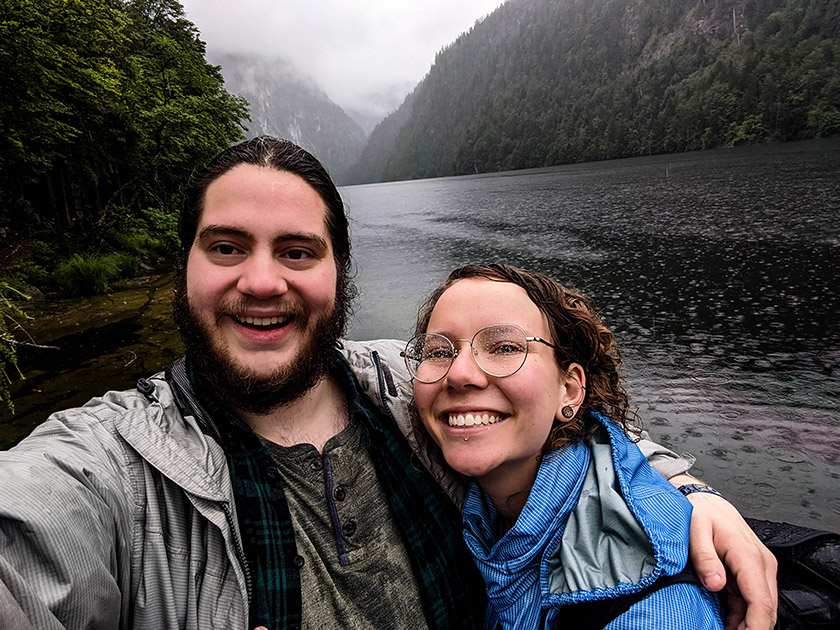
Jenson Heaton | nomadicinscriptions.com
When first starting everything was a huge learning curve. I had to learn how to build a website, figure out an e-mail marketing program, and write better. That was just the beginning of all the things I had to learn. It got to a point where I was spending endless hours hopping between various to-do’s.
It didn’t take long for burnout to set in. So I quit. Not once or twice, but four separate times. The first two times I ended up scrapping the entire site and coming back to it months later. The website never looked good enough, my writing wasn’t where I wanted it, and Mailchimp was an absolute pain in th- well you know. My analytics were pathetic. I felt like I was dumping in money and getting nowhere.
The more I learnt the more I felt I had to do. You need a regular schedule for releases, plus you need to write guest posts for others so your name gets out there, plus SEO, plus watching videos to learn, amongst so many others. It just got to be too much, especially when travelling. Instead of going out and doing what I enjoy I was back in the hotel or in a cafe working. It was exhausting and before long it became too much.
It was actually two main sources that helped me when at a point that I was wearing myself thin. The first was Stephen King’s “On Writing”. In it, he suggests writing a certain amount every day. Set your own limit. Mine is a minimum of 500-1000 words. It doesn’t necessarily have to be for your blog. Just write! You got into this because you enjoy writing and want to share so don’t let it become a job, but stay consistent.
The second was the guys at Nomadic Matt. I decided to get their course when it was offered for a one-time lifetime price of 100 USD. As I was going through the course it felt like another thing I was piling on. So when I had the opportunity for some one-on-one time with Chris I jumped at it. I laid out my issues and got some of the best advice that, in the end, propelled me forward.
“What works for one person won’t work for everyone. You have to find what works for you. If you play too much set specific times to work. If you work too much set a time that you will stop and go enjoy. Oh and Prioritize”
That changed everything. Now I’ve set a schedule. Every Wednesday, Friday, and Sunday (and the odd Monday) I work. I write a list of what needs to get done for what aspect and pick what day I will do them based on when they need to be done. One day a week, usually Saturday, I take a break from everything and have a “me day”. Those “me days” are necessary for fighting off burnout.
“Start with a WordPress theme that is light and speed-friendly.”

Isabella Biava | Boundlessroads.com
When I started blogging 5 years ago, I just wanted to create a beautiful appealing site as a place to share all my travel adventures. So I picked a theme called X-theme that was suggested by a very successful travel blogger. She was raving about it, and it was the number one theme sold on Themeforest.com at the time, so I didn’t think twice and bought it (around $50 USD one time payment).
I have to say it was fun to use and very much user-friendly. However, despite all my efforts, my site never seemed to take off. Later into my blogging career, while learning about SEO, I realized that my site speed was outrageously slow and that could have been one of the issues preventing me from ranking well.
I managed to continue growing my blog and was accepted by Mediavine right before covid. However, my site speed was still ridiculously slow despite trying everything I was told to do to fix it.
Nothing worked until I switched to Trellis, the new theme launched by Mediavine itself. My speed score went up to 100% immediately. And on the very same day, my traffic literally doubled. Fast forward 4 months, my traffic is still continuing to grow.
I know that speed is not the only factor for growth but it’s a huge one! Had I known before, I may have been able to grow much faster. Last November I started my second site and I was happy to learn that I could use Trellis theme as well even if that is not on Mediavine… yet! Obviously, I made the switch as well. It’s quite expensive but totally worth it.
“Keep the number of plugins on your website to a minimum and be sure to check the impact of these plugins.”

Joel Marrinan | inmykorea.com
When I first started blogging, I was so eager to create an amazing looking website with lots of bells and whistles that would encourage people to spend more time on my site.
To do that, I downloaded a whole load of plugins to make my site stand out more, including social media plugins, Instagram galleries, page builders, and more.
Some of these plugins were free, some had a small monthly fee but offered so much that they seemed to be worth the investment. These were the tools to a great website building experience, after all. They were surely worth it.
Coming from a non-techie background, I had no idea the number of headaches installing all these plugins would cause me over the coming months.
To begin with, it turns out some plugins don’t like working with other plugins, causing them to ‘break’ and not do what they’re designed to do. I seemed to spend half my time turning plugins on and off again to debug my site, time that should have been spent actually writing blog posts.
Other plugins caused a lot of ‘bloat’, slowing down my website and making page load times terrible. Things like rotating Instagram galleries at the bottom of each page may look pretty, but they add a lot to your page load time and eat up your resources – which can cause more problems for people who have a cheap hosting plan and limited resources.
The worst thing about having too many plugins, however, is the leftover code that stays hidden on your website, even after deleting the plugin. Developers creating free plugins can create amazing products that help you, but some of them can leave a nasty stain on your website that takes professional help to clean up.
After a lot of trial and error, I’ve cut the list of plugins active on my site down to about 12, with most of them being popular plugins that deal with my theme, analytics, speed optimization, and image optimization. I’ve done away with the fancy, flashy plugins that promise great social media links and rotating image galleries.
I wish I’d known the best plugins for my site at the start of my travel blogging career as it would have helped avoid dozens of hours of wasted time trying to correct plugin issues and improve the speed of my site. My advice to people who are just getting started is to read the reviews thoroughly, think about whether you really need that plugin, and whether there’s a better alternative out there.
“I had no idea how much maintenance was required to keep your blog running!”
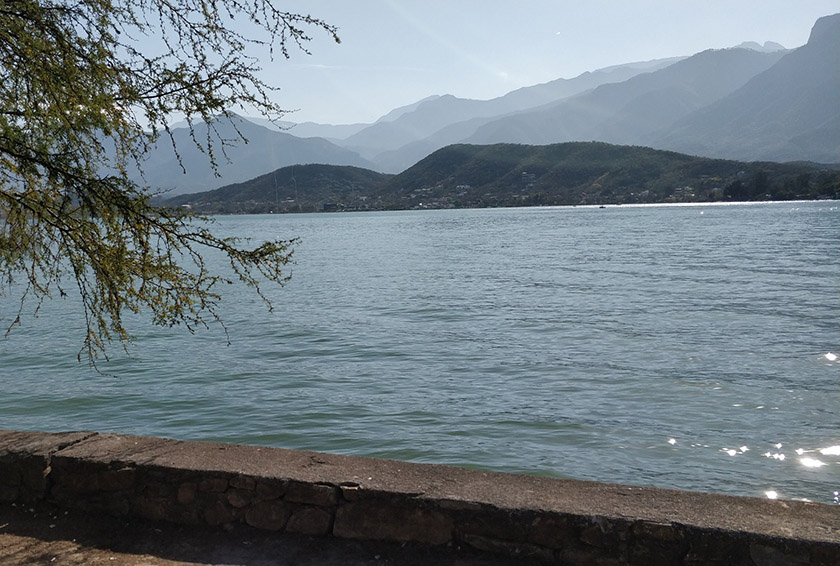
Ve Naugh | venaugh.com
After you’ve finally got your blog up and running, plugins and themes installed, basic About Me page going, you think that these are things you will not have to touch again. Well at least that’s what I thought. But turns out, there is a lot more behind the scenes maintenance than expected.
I have some plugins to update on my site at least once a week. I also like the idea of a social media plugin, only to realise that it kept crashing which was again another task that I had to fix weekly. For this plugin, I had put a shortcode within every single post and page that I had, so every time it stopped working, I had to re-create the short code each time. As I had more and more content, I realised how unsustainable this was and simply had to do away with this plugin.
These are minor when compared to having to update your WordPress or theme. The latter I have not been brave enough to venture a try as I barely have enough time to even keep things going at this point, far less for something that’s not absolutely necessary.
As for a WordPress update, I panic every time this needs to be done as they recommend you backup everything before in case something goes wrong. Just the risk of something going wrong is scarier enough when you’ve worked so hard on your site.
Also, I’m not a very tech-savvy so I usually run to my host provider if I have any doubts. They’re not always the most helpful but they’ve gotten me through enough so far. There is only so much time in a day but blogging definitely makes you realise that you can do a lot more in a day than you ever thought imaginable.
“Set your default blog post permalink settings to follow the domain URL directly from day one.”
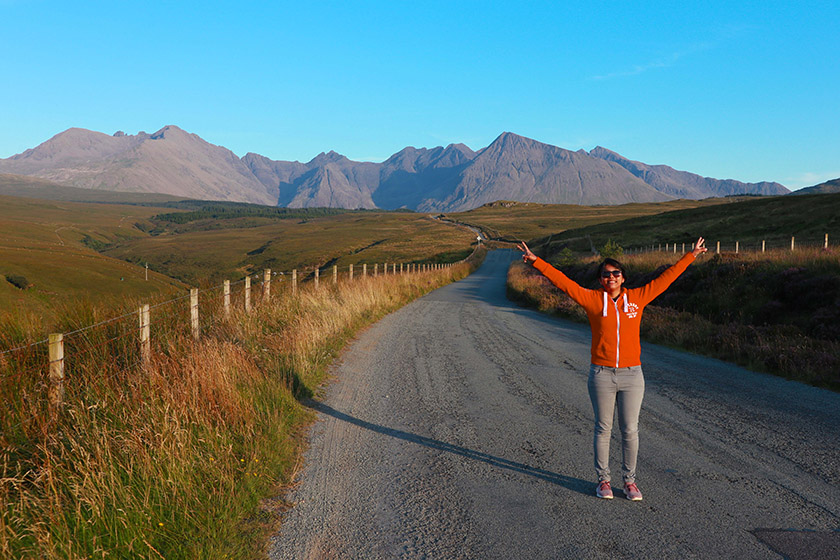
Jumana Mp | planethoppergirl.com
When wordpress auto-generates the permalink, there are multiple options for it to construct the URL for your blog post. Once you specify the URL slug for your blog post, it constructs the post URL (permalink) starting with your domain URL.
You will find the options in the Permalink Settings on WordPress.
Some of the top options are:
- example.com/category/blog-post-URL-slug
- example.com/2021/06/06/blog-post-URL-slug
- example.com/blog-post-URL-slug
When I started my travel blog, I set it to follow the Option 1, as I liked the idea of showcasing category in the URL, which later turned out to be a complication when I re-architected my website. I had to change the URL of many blog posts and add redirections.
Most of us might start our blog with some initial categories but would like to change them later, as we grow or change the niche down the route. Unless you are certain about categories and tags, there is a big chance you will change them down the lane and that will break your permalink for the blog post.
If you use the date option, it becomes frustrating when you constantly update content and wish to
keep your post evergreen and fresh to your audience. To solve these troubles, my tip would be to set the URL default to take Option 3. In this case, no matter which date you published the post or how you change the category of your post, the URL remains intact. It is best to use category and tag buttons to posts, to make it user-friendly than making it part of the permalink itself in my opinion to avoid maintenance issue.
“Resize, rename, & compress images BEFORE you upload them to your website.”
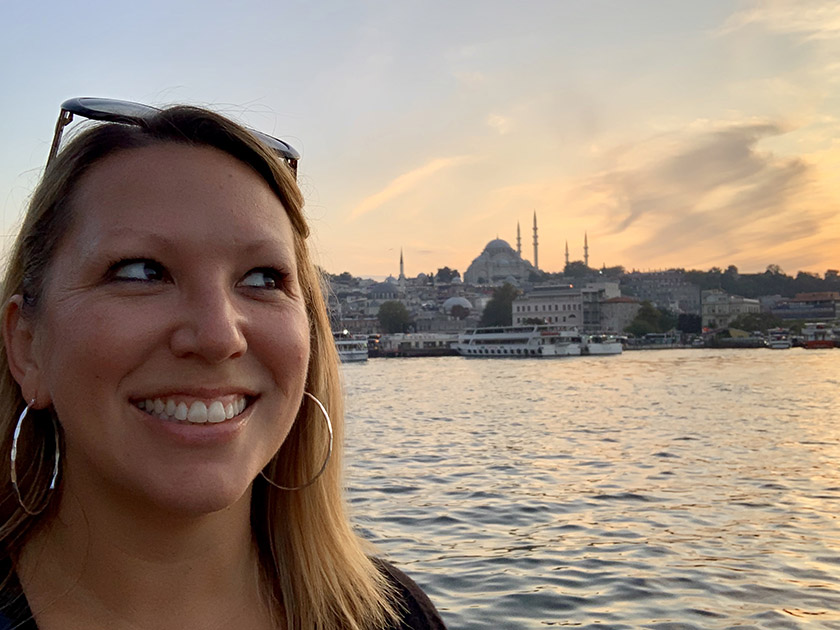
Jessica Fergen | onegirlwholeworld.com
When I launched One Girl, Whole World five years ago, I’d run a cooking blog for years, so I happily avoided some of the common rookie mistakes in my second endeavor. But a few years later I started having issues with my site going down. When I called my hosting company, they said it was because I’d totally maxed out my disk space.
Turns out, one of those common mistakes got me after all—all the full-size images I uploaded to the site were absolutely killing my server space. Even a couple years later, I’m still working to optimize my old images and I have to pay for the highest amount of server space that Siteground allows.
Bottom line: While I can improve going forward, there’s only so much I can do retroactively. Don’t be me!
There are two major reasons to optimize your images. One is to make sure the images don’t cause slow load times (over 50% of users will leave a website if it takes more than 3 seconds to load). The other is to save space on your hosting server. Most decent hosts cap disk space at fairly low amounts (10-40GB). So how do you do that?
First, if you do nothing else, resize! Cameras (and phones) these days yield insane file sizes, when a fraction would still give you amazing resolution on a website. So once you’ve selected your images, use Photoshop (or a free tool like Photopea) to reduce them. Consider the max width of your website, then add a little padding. For me, I use 1200 pixel width as my anchor, then export as a 90% quality JPEG file. This takes most images from 3MB+ to about 300KB.
That brings us to the next step, rename. This can be simple, either renaming them as you resize (simply “Save As” a new name) or use a free bulk renaming tool (my preference). I just add the same prefix to all images for the same post, for simplicity. Having images that include keywords can help with SEO over time, but keep it short (like “cathedral_rock_sedona_img_3620”). The other (selfish) reason that renaming your images is great is that it helps you search for photos in your CMS later.
Even if you only do those two steps, you’ll be miles ahead of most people. I recommend taking it a step further and use a compression plugin. There are many different free plugins for compressing images. I currently use ShortPixel Image Optimizer on my travel blog and Smush on a different blog. There isn’t one “best” plugin, just do your research to make sure it gets good reviews and is compatible with your CMS.
CDNs (Content Delivery Networks) go even further and are a slightly more complex topic you can dig into if you’re interested—basically using a network to serve your images and improve site load times.
So before you even *think* about dragging those images over to upload, make sure you’ve covered your “R’s”…resize and rename!
“Life as a blogger became so much easier once I learned to make SEO my top priority!”

Erin Clarkson | savannahfirsttimer.com
My blogging journey started with a lifestyle blog that my daughter and I co-authored; she shared beauty posts, and I wrote about travel. We had no clue what to name the site, so we picked a random term that sounded cute and memorable, and we ran with it.
The site did fine, and it grew to a DA in the upper 30s or so before we stopped posting on it regularly. These days we just update old content on it. Due to the wide variety of topics covered on the site, we found that it was fairly difficult to rank for keywords as quickly as we’d hoped. So, we started digging deeper into the world of SEO.
After many hours – and plenty of money) – spent on blogging courses, I finally decided to start fresh with a niche site. I researched my topic and made sure I picked specific keywords [that I intend to rank for] when I selected the new site name, categories, and cornerstone content.
These days, whenever I plan content for the new site, I spend a good deal of time researching keywords and checking out the competition for those words. I then plan my content around phrases for which my site has a good chance of ranking. I still write for my audience – not simply to appease Google – but I make a strong effort to weave my keywords, or variations of them, into each post.
As a result, my posts often rank on or near the first page of Google search results for my targeted keyword(s) even shortly after publication. Now… I’m not suggesting that other bloggers abandon their current blogs to start a new site. Not at all! However, I am suggesting that new bloggers make SEO a top priority.
I advise others to thoughtfully plan out their blog’s layout and content based on strong keyword research. I use Keysearch to do much of my content-planning, and it’s one of the top paid tools I recommend for anyone serious about SEO.
One of the biggest perks of focusing on SEO is that I don’t need to rely on social media or advertising to drive traffic!
“Writing good content is only half the job. The other half is working the algorithms!”
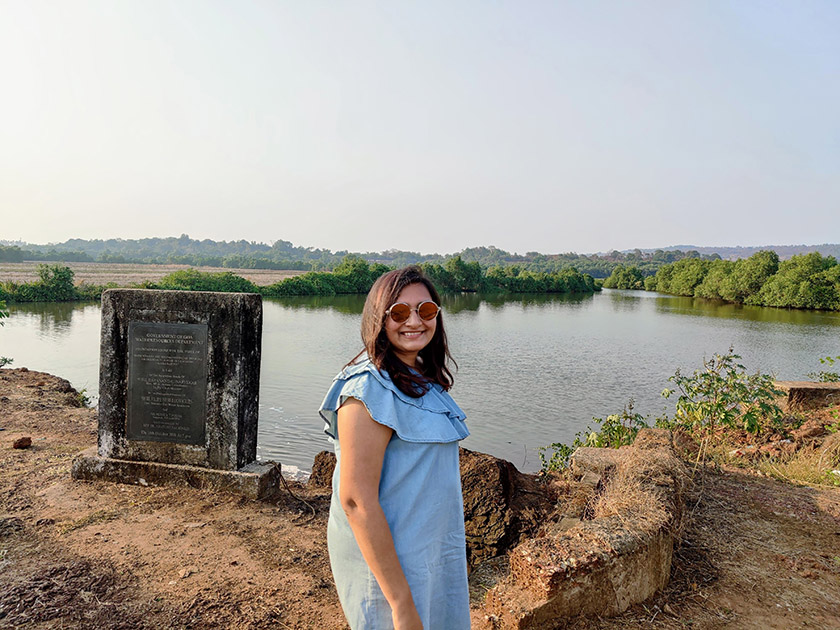
Anukrati Dosi | bulbulonthewing.com
One thing that I learned very early in my blogging career was that blogging is not only about writing good content, but more importantly about working the algorithms. Thousands of other people are writing as well as you, so you have to play a little smarter and work towards building your community.
I often joke with my fellow bloggers about how the actual work starts only after you hit publish. That's when you need to proactively market your blog post on your chosen mediums and spread the word around. You cannot afford to just sit back and wait for the audience to come to your blog.
For example, if you have always been a social media hermit, the sooner you mend your ways, the better it is. I was one of those people who rarely shared things on social media. I did not even have an Instagram account until I started blogging! Soon after creating one, however, I learned that Instagram and other social media platforms are all different ball games and needed my undiluted attention.
I learned how to work the algorithms, which allowed me to tap into large audiences on social media channels like Facebook, Instagram, Twitter, and Pinterest — which is where a majority of my most active readers came from. If I had not started being active on those platforms, I would have never built my audience.
“When I started out, I made the mistake of wanting to be a lone wolf.”
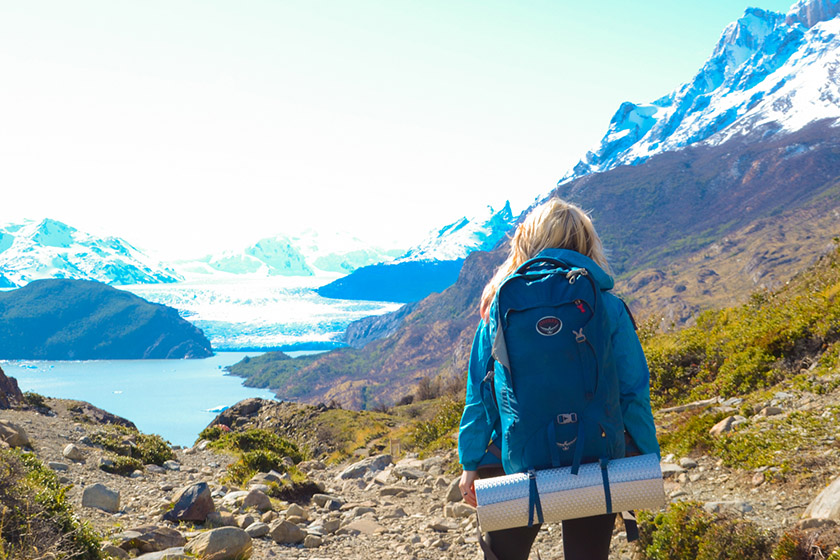
Emma Tryon | thebackpackingfamily.com
I feel embarrassed to admit this one, but I know I’m not the only one who has made this major mistake and I really want to help you avoid it. When I started out, I felt so protective of my ideas, I was so scared that other people might steal them. This led me to want to approach blogging as a bit of a lone wolf. I wanted to make it on my own.
I’m not saying it isn’t wise to be protective of your ideas, but somewhere between being over protective and convinced I could work it all out myself I went at it alone. Looking back this is such a strange decision for me as I have always been a ‘there’s enough sunshine for everyone’ kind of person; but something about entering the blogging world brought out the lone wolf in me.
Over time I have met many inspirational bloggers and content creators which has led me to understand the power of collaborating and networking. Networking doesn’t mean everyone is going to steal your ideas! I have since joined countless groups and communities that are super supportive and uplifting.
Blogging is a tough game, it is also a long game, it is full of highs and lows. You need to be part of a community that cares. I now love that I can ask questions, celebrate wins and support others in their journeys; I just wish I had done this from the beginning. I could have avoided a lot of mistakes.
I would encourage you to start by thinking up and tuning up your ideas and aspirations, but before you run with them, take time to connect with what others are doing. Join groups, learn, share and grow. There are groups directly to help you with tech issues, groups that discuss great concepts surrounding your niche and there are groups that are there pretty much just for moral support; you probably need to be in at least one of each.
“Page views don't dictate when you can start pitching.”

Nina Clapperton | ninaoutandabout.ca
Most travel bloggers begin with this idea that they need to hit a magic number to start monetizing their content, but that’s just not true.
When I started out, I thought I needed to wait until I hit 30,000 or even 50,000 monthly page views before a company would take me seriously for a sponsored post pitch. Meanwhile, bloggers with less followers or smaller audiences were landing them all the time. But I couldn’t get this idea that once I hit this magic number companies would suddenly be interested in me.
Once I hit 10,000 monthly page views, I took a course on landing sponsored content to help me prepare for that fateful day. The first thing she said was numbers don’t matter.
I was blown away.
Why had I put monetizing my site on hold for so long if I could be doing it already?
The realization kicked my butt into gear. I was pitching one Friday of every month, seeking out brands and tourism boards from around the world.
But it wasn’t working.
So I fell back on my magic number idea. It must have been a fluke that she was able to monetize earlier, because it wasn’t working for me.
Right?
Wrong!
I realized reading the sponsored post template I’d created based on a lot of free research that it was all about what they could offer me, not what I could offer their company or who my audience was. Turns out, you can monetize when you’ve got even 1,000 page views as long as you know how to write a solid pitch.
After I changed my pitch, I started landing paid gigs, like a sunset canoe tour in Toronto.
It’s totally attainable and not something you need to wait for. As long as you know your value, page views are secondary!
“Don’t neglect your internal linking. It’s the fastest and easiest way to improve SEO!”
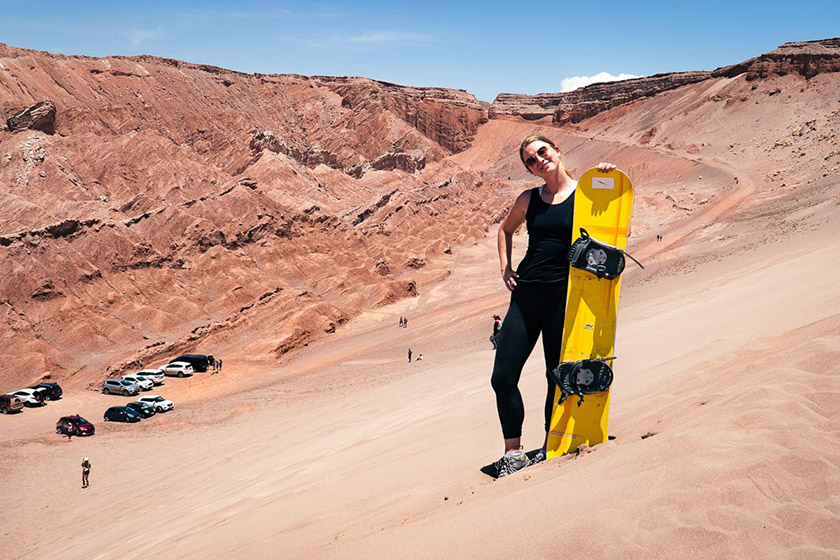
Cecilie Mortensen | wowiwalkers.com
I can’t count the number of times I’ve been told that external link building is crucial to your blog’s success. And while I get that external links are important to build up your site’s authority and ranking on Google, it's just a lot of work.
One day I decided to dive into the term, “internal linking”, and that’s when I really started to understand SEO. A whole new world opened up to me, and I can’t help but wonder why nobody told me about this aspect of link building? Maybe because it was right under my nose the whole time, and it seemed too ridiculous to not know already? But truth is, as a newbie blogger you know nothing in the beginning, and you get revelations on a daily basis.
So, what did I learn about internal linking? Internal links are links that point from one page on your site to another page on your site. The internal link structure of a blog is important for so many reasons, and it’s one of the fastest and easiest way to improve your SEO.
When pointing from one of your pages to another, you’re telling the search engines about your site structure and the hierarchy of your pages. You can also anchor the text as you like and help search engines understand your keywords for specific pages. Internal linking can also improve UX and lower your bounce rate because people more easily can click around on your site. And as if that wasn't enough, internal linking also makes it easier for search engines to find your new URLs!
There are so many perks to internal links, and the best thing is that you’re not dependent on anyone but yourself to make it happen. Just go to your site and start connecting your pages in a way that’s meaningful.
So, my lesson learned is, go get your internal link structure in order before you get lost in the world of external link building. Both link strategies are important, and one should not neglect the other.
“Earning backlinks is the gamechanger when it comes to ranking your posts.”
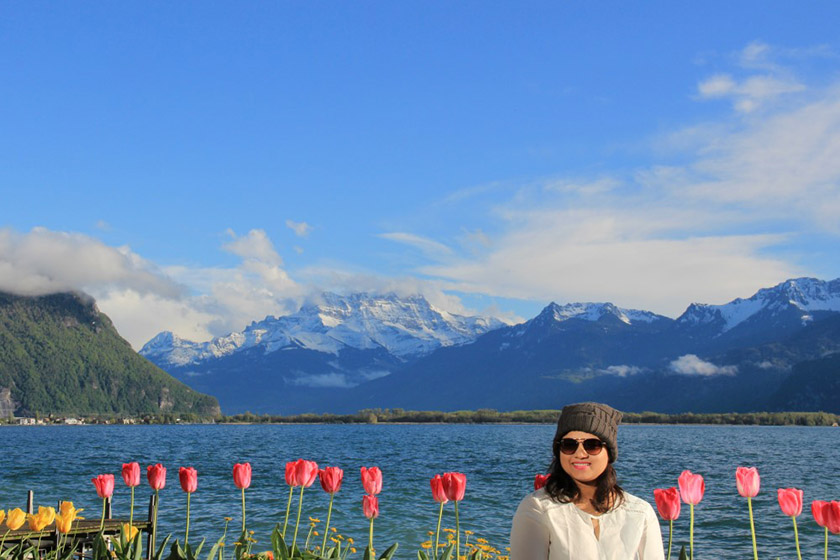
Jayati Gupta | betweenlongitudes.com
I started travel blogging last year when a lot of information on blogging was already available on the Internet. Hence, I had every possible tool in my arsenal – a good host, a premium theme, practical content plan, love for creating Pinterest graphics, YOAST premium plugin to help out on the on-page SEO, paid Keyword research tool which I adore, and a few of my blog posts on Google’s second page. Travel blogging being a very visual niche, I have also offloaded a portion of image-editing activity to an expert.
However, despite my best efforts my posts never rank on Google’s first page. The push from the 2nd page to the 1st page seems like a never-ending journey. This has kept me wondering what I am doing wrong!
It is only recently; I have figured out that backlinks to your blog or post are the gamechanger for ranking on Google. It is a signal to Google about quality content and that helps to rank higher. Getting backlinks requires time, effort, and strategy and that’s what I am focusing on now.
While starting off and till a month ago, I was too much in my blogging world and participated in Facebook threads for saves and clicks! The backlink subject never came up in my SEO-related searches on Pinterest or the Beginner SEO courses (mostly free) that I had taken.
Now that I have understood its importance, I am updating my content strategy in a way so that a newbie travel blogger gets backlinks. This begins with ensuring quality content that people will like to link back to. I know natural backlinks are going to take time. But some of the actions can be easily taken at every stage of blogging, even now.
I wish I started on this backlink exercise much earlier and this is the biggest lesson I wish I knew before starting blogging.
But the good thing is, my journey has started now!
“Learn in depth keyword research so you can target multiple keywords for every post you write.”
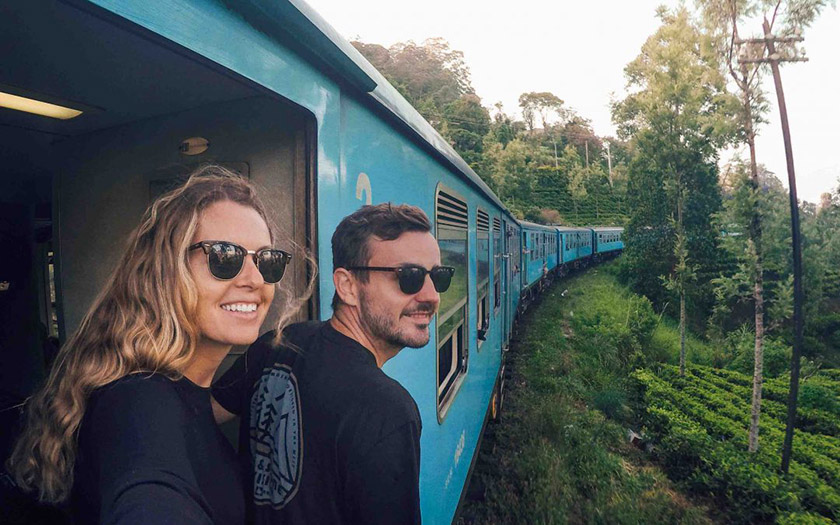
Luke Storey | wildaboutbc.com
Keyword research is an essential part of blogging if you wish to get organic traffic from search engines like Google. You need to find keywords that people are actually searching for and write on that topic. But what many bloggers do is find a main keyword they want to write about, and maybe a few other supporting keywords, and they write their post with just a handful of keywords in it.
After following a similar strategy when I first started blogging, I eventually learned to do much more in depth keyword research. Many of the posts you plan to write will actually have tens if not hundreds of keywords associated with the general topic. You will still want to target a main keyword, but you can also include many more than this, as some of my posts have up to a hundred relevant keywords in them.
What is great about this strategy is that it increases the potential search volume for your post and should allow you to attract more visitors. What is really interesting about this is that most of the keywords fit really naturally into your post as you would be writing about these things anyway. Doing in depth keyword research just allows you to phrase it correctly so you will show up in search engines more often.
A great tool for completing in depth keyword research is Keysearch. Once you have a main keyword, use a filter to remove all keywords under 3 words, as you want to target long tail keywords, and remove all keywords with a volume of less than 20. Then you can export a csv file of all of the related keywords and use Excel to organise by volume. Work through this csv file to remove irrelevant keywords until you have around 100 relevant keywords that you can add to your post.
You’ll probably find that your post reads just as well but now it should be visible to a lot more people. This can take your post from potentially being seen by a few hundred people to being viewed thousands of times more as you have included many more natural keywords.
“Don’t accept crappy paid guest posts.”
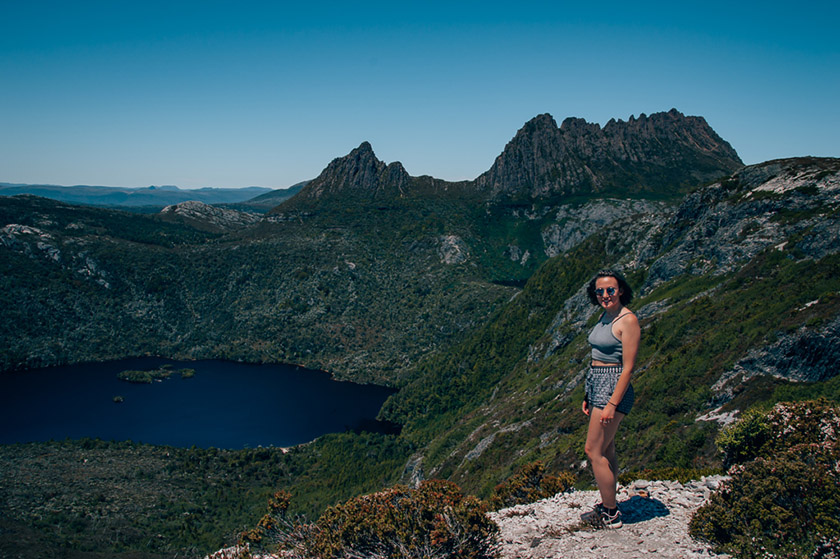
Tammy Thurman | travellingtam.com
The dream with blogging is that one day you’ll be able to monetise something you love. So when those emails start rolling in about paying YOU to publish their guest posts on your blog, it almost seems too good to be true, right? Well, it often is.
First of all, you’ll soon learn you’re not special. Agencies, bots and ‘Outreach Managers’ will spam every blogger they can find around the world, seeking someone, anyone to accept their ‘relevant’ content. However their propositions of topics such as ‘The Best Gambling Sites in the US’ or ‘How to Stop Going Bald in your 20s’ isn’t exactly the ‘perfect fit’ they promised for your travel niche.
Not only that, you’ll generally find that if something does work out, it’s poor quality. The key with getting Google to value your content, is by writing good quality articles that are valuable to your readers. These low quality guest posts just never seem to offer that value. After all, all the guest poster cares about is the backlink to theirs or their clients website, not a paragraph actually being coherent.
It’s also worth noting that search engines do not like paid link insertions or guest posts. If they find out, they may penalise you. Is it worth the risk? No. I’ve done it before as an early day naïve blogger enticed by the cash, but it’s something I wish I hadn’t. I’m now stuck with crappy content I can’t remove because I don’t want my brand being tarnished should I go against our agreement.
The more you grow as a blogger the more you’ll realise what opportunities come up that are genuine, suitable and valuable. But in the meantime, ignore those spammy guest post requests – you’ll only regret it later down the track.
“Having a large social media following does not necessarily generate consistent website traffic.”
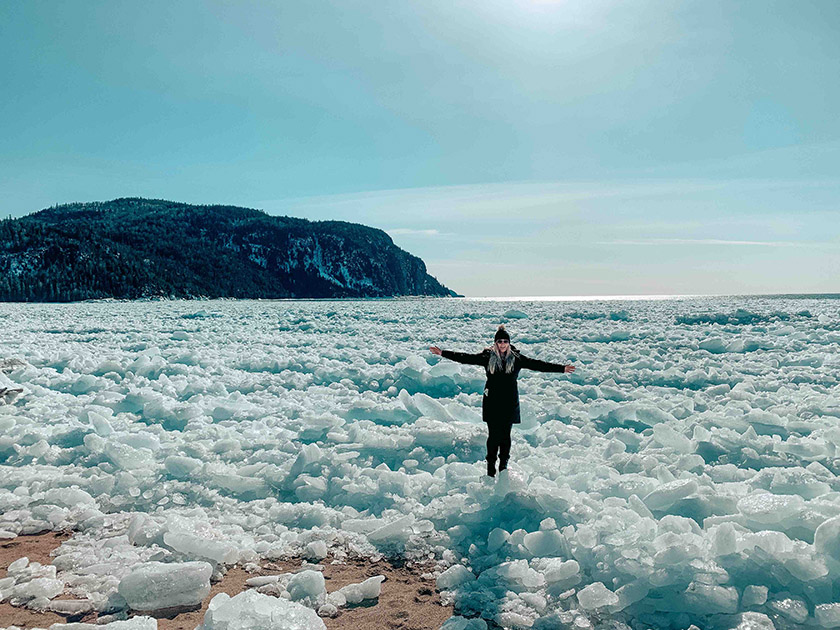
Claire B. | clairepins.com
When you first start a travel blog, you might think that having a large social media following will be a guaranteed way to get immediate and consistent website traffic. When I initially launched my website, I thought that the secret to getting website visitors was just to try and gain a lot of social media followers. I would spend hours a day on liking, interacting and growing my following, and very little time on optimizing my actual website for search results. After two months, I was getting very few website visits from social media posts, even though I was steadily gaining followers and my content was getting likes, shares, comments and reaching the ‘Explore’ page on Instagram.
What I realized was that a popular social media post or video could drive some initial traffic, but this content often has a short ‘shelf-life’ and the traffic would drop off within days of that post.
So after two months of investing most of my time and effort into gaining Instagram followers, I shifted my strategy towards SEO and now the majority of my website traffic comes from Google Search and I get consistent visitors every day.
While some platforms like Pinterest and Facebook can drive traffic, it is important to keep in mind that companies like Instagram are ultimately in the business of producing a profit through advertisements on their own platform and do not want to encourage users to leave their app to go visit your personal website.
An additional issue to keep in mind is that social media algorithms change constantly and users can have their reach limited or even have their accounts banned or revoked for reasons which remain unknown to them. Some people put years of work into creating a social media following, with no backup plan for how to generate website traffic if their account is suddenly shut down.
Overall, having a social media presence is a good strategy for activities like brand awareness and networking, which can support the overall success of a travel blog or website. Try to use your time on social media efficiently by designing a content calendar and creating content in batches to be used throughout the month. Stick with a consistent posting schedule and block off a limited amount of time per day for interacting and responding to followers.
Being smart and efficient with the time you spend on social media will free up your schedule and resources so you can direct your efforts towards strategies like SEO, which will ultimately drive consistent traffic to your website with long term commitment and correct implementation.
“It took me far too many years to use local signs / tourist boards to help with research.”
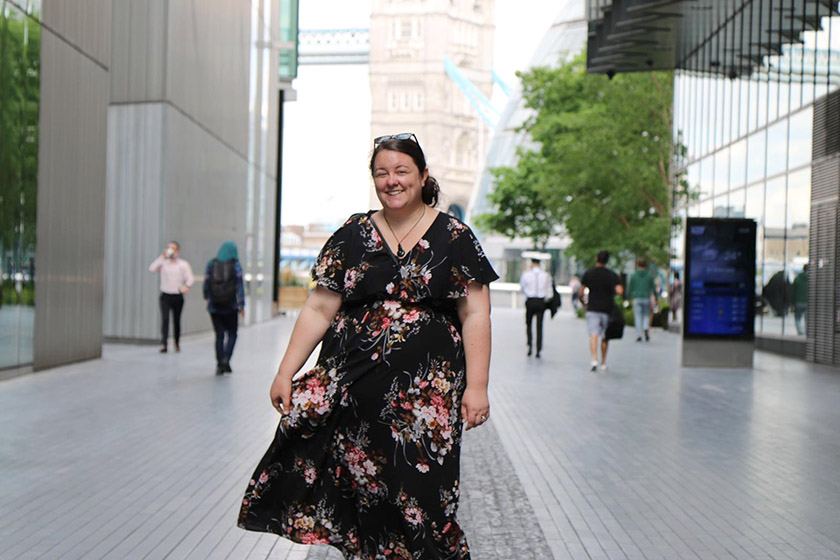
Emma Creese | adventuresofalondonkiwi.com
Picture this; you're in a beautiful, historical location, reading the tourist boards dotted around perfectly situated to learn all about the locale. Then, a few months later you decide to share what you've learned in a long, helpful blog post… only what was that date/amazing local story again?
I have a brilliant, minimal effort hack for accurate, interesting research with only a second or two of effort. It's as simple as the click of a camera lens, and provides you with research usually taken from local primary sources that have been quadruple checked by experienced teams.
Instead of relying on your own patchy memory, do your research on location using official primary resources shared on the tourist information boards at the historic site. It's such a simple step to take a photo of those boards; research done! Even better, the information is saved on your camera right next to your photos of the location, needing no searching through the 25 places you make notes on your phone, AND you can concentrate on the beauty at hand.
Fancy something that you can pop into your pocket? Visit the local Tourist Information Centre – you can guarantee that they'll have pamphlets & leaflets on local icons or they'll know where to find them.
“Read contracts carefully and know the value of what you agree to with brand partnerships and collaborations.”

Charu Goyal | travelwithcg.com
When I first started posting my travel pictures on social media, I had absolutely zero clues that one could make a living by doing that. Blogging and digital nomads were just terms that people were starting to hear back then. So, when I got contacted by a big, global brand seeking to re-share my picture on their online platforms, I exclaimed “YES!” as loudly as I humanly could.
The brand in question here had upwards of four million Instagram followers at the time. Thus, the thought of getting reposted on their account made me feel so overwhelmed that I did not even think twice before agreeing to everything they asked. The novice in me believed I was just permitting them to repost a picture of me wearing their product on their social media channels in exchange for credits and tags.
I expected it to bring me some exposure (which like most features it did) and benefit both myself and the brand. However, I was stunned when friends of mine started finding the same picture in digital ads, newsletters, the brand’s official website, and beyond weeks later. I reached out to my contact at the brand to see what was happening and was shocked to learn that I, myself, had authorized them to use my image.
You see, when the brand had nicely messaged me on Instagram to let me know that they would like to feature my picture online, they also sent a small link that contained more information about it. By replying yes to that message with their particular hashtag and not carefully reading the contract that the link enclosed, I ended up giving them perpetual, worldwide rights to my image for free of cost.
Having no clue about the business side of blogging and image rights at the time, I am unsure if I would have done things differently had I read the contract then. But, knowing what I know now about brand partnerships and the value of such copyrights, I definitely would have asked for a fair fee.
It has now been a few years since this happened, and the same brand has since then accepted to pay for the exact list of rights I gave away for free for another picture. I come across many comments and messages from multiple brands doing the same thing on social media nowadays and just hope that this lesson can help more bloggers understand the value and meaning of what they are giving away before signing a contract.
“Have a useful newsletter opt-in freebie from the day you launch.”
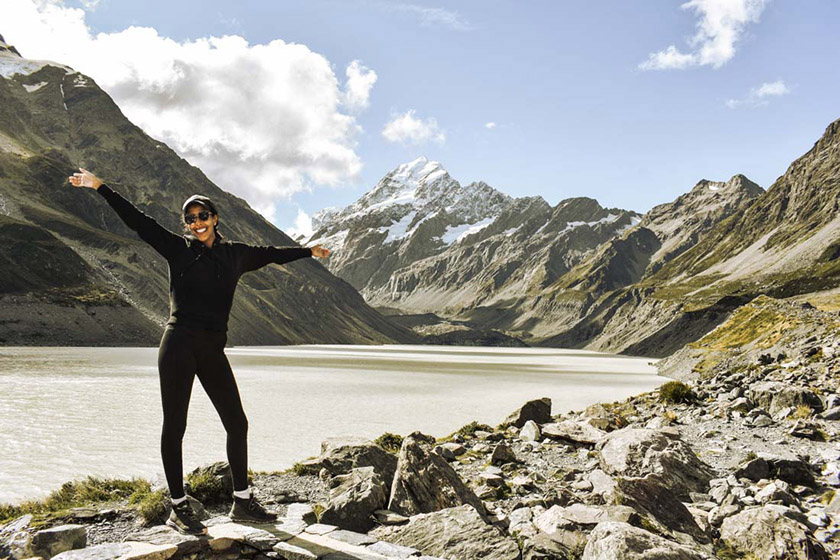
Em M | thattravelista.com
Having your own newsletter emailing list is powerful for several reasons. Firstly, it allows direct access to your community without being at the mercy of a social media algorithm or regularly competing for high spots on a search engine results page. Secondly, it provides peace of mind that access to your community won’t someday disappear, unlike on social media where your account can be blocked or the whole platform can even discontinue, like Vine did. Lastly, it uses a communication mode that the average person checks everyday, if not multiple times a day, which cannot be said for all social media platforms or search engines.
Now, I knew all this before starting my travel blog, and maybe you already know it too. From the very day I launched my site, I had a newsletter opt-in on my homepage as well as on my sidebar. What I did not have, however, was a reason for viewers to actually opt-in — a freebie. I knew I needed one, but I figured I would put it off for some months until my site started getting a good amount of traffic. I know now that this was a mistake.
After some time, one of my posts started getting a bit of regular traffic. I decided to finally create a freebie I already had in mind for that page, which took a couple days. I then had to figure out a place to upload the file where it would not be accessible to nonsubscribers. After that, I had to create an email sequence to take a new subscriber from submitting their email to downloading the freebie.
Needless to say, this all took quite some time. And when I finally launched the freebie, its success made it clear to me just how many subscribers I had missed out on by waiting until after I had traffic to create it. I wish I knew to have this freebie live since day one of launching my site.
While my first freebie was successful in generating newsletter sign ups, that is definitely not always the case for new bloggers. In order to have a successful freebie, it needs to be immensely useful to your reader. Most readers are not dying to join another email list, so the freebie needs to provide information they cannot find on Google or download from a more experienced travel blogger. Although a freebie like this will take more time and thought to create than the typical “carry-on packing checklist” or “list of ways to save money for travel” freebies, having this ready to go from the very first day you launch your blog will save you from missed subscriber opportunities once your traffic picks up!
“Collab post can change the way you build links for your blog.”

Victoria Heinz | guideyourtravel.com
As a new blogger, you’ll soon realise that building links for your blog is absolutely key to push your rankings and help you get on the first page of Google. Especially if your blog is still new, it’s incredibly difficult to gain links organically.
Initially, my tactic to build links included sending out mass emails to other blogs and asking for links. I even briefly looked into buying links (which is a big no) but luckily did my research and figured out that this practice would only hurt my blog rather than help. I noticed pretty soon that my emails weren’t getting me links or even responses. Most websites wouldn’t acknowledge my email and those who did usually asked for large sums of money.
After months of trying I’d barely managed to get a dozen links and most were to small websites or included link swaps with irrelevant sites. Luckily, I managed to escape this terrible link building tactic and learn from my mistakes. I finally found blogging Facebook groups that are dedicated to collab posts.
Collab posts include several bloggers contributing to a post in return for a link back. They work best for relevant posts and can really help new bloggers increase their rankings. Collab posts can include many different topics and will help your blog gain links quickly and sustainably. If I’d known how to use them as a new blogger I could have jumpstarted my blogging journey much sooner.
“Write the kind of e-mails that you'd like to read when you do cold outreach.”
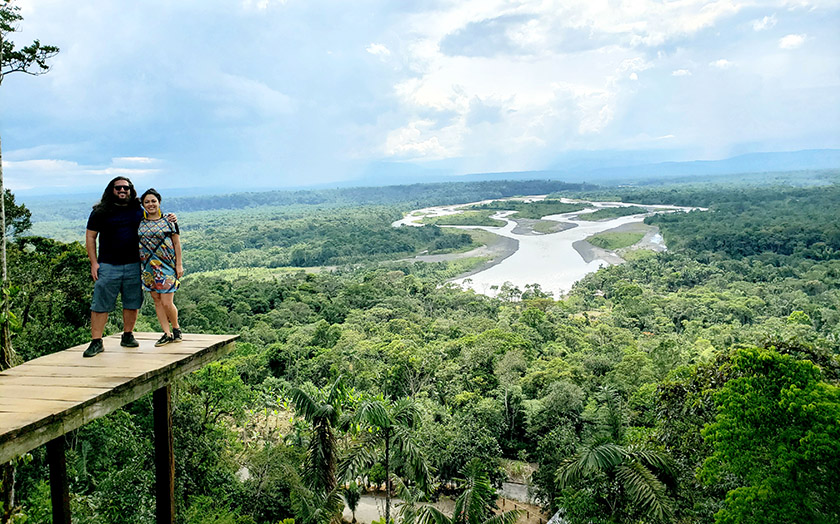
Paul Drecksler | travelislife.org
I don't do a ton of cold outreach, but when I do… it's tremendously successful (as compared to industry benchmarks). And the reason people open, read, and reply to my e-mails is because I sound like a human being and not a marketer or an outreach professional or anything else like the hundreds of e-mails they get that all sound the same from people who want something from them.
If you've been in the game long enough, you know the type of e-mail I'm referring to…
Hi Paul – I've been following your blog for some time and I must say you offer great content. I was wondering…”
Hi there – my name is Kevin from Blah Blah and I have a very simple question for you today…”
Hello there – I know you must be busy so I'll get straight to the point…”
And of course my least favorite subject line that I must get 10x a week…
Quick Question
Just because your question is quick to ask doesn't mean it'll be quick for me to respond!
I've come to hate most of the e-mail outreach that I receive on the daily. Words that I would use to describe most of the outreach I receive include: Cute, Cliche, Gimmicky, Pandering, Inauthentic… but mostly… Impersonal.
When I was new at blogging, and I lacked the confidence to think that people would want to hear from me — my e-mails sucked too.
Eventually though, I stopped making the mistake of trying to sound like what I thought people WANTED me to sound like and started writing e-mails that sounded a lot more like ME.
What's funny is that the way you would naturally write a PERSONAL e-mail probably goes against how you'd instinctively write an e-mail to someone you don't know.
But let me ask you this — which e-mail below sounds more like it comes from someone you know vs a stranger who wants something
#1 – “Hi Kevin – My name is Paul Drecksler and I run Travel is Life, a website dedicated to bringing the world to you through videos, stories, and travel resources! If I could have a moment of your time, I was wondering if you'd be interest in participating in a giveaway we're doing for travel bloggers. It'd be an honor and privilege to have a respectable company like yours as one of our prize offerings…”
#2 – “Hi Kevin – We're hosting a giveaway geared at travel bloggers and looking for a hosting company to be one of the prizes. It's free (other than the prize you'd offer) and we'd only earn through our affiliate links. Any interest? Thank you. – PAUL”
E-mail #1 kind of makes you want to jam your cell phone into your eyeball doesn't it?
Except that's how people write to each other for some reason.
You hate it. I hate it. Yet we still do it ourselves when we cold outreach to people.
Here are three simple cold outreach rules to follow:
#1 Never introduce yourself. Only strangers introduce themselves. If you want to write a personal e-mail… be personal. And people you know don't introduce themselves. Plus your name is in the To field of your e-mail and in your signature.
#2 Shorter is better. Cold outreach e-mails are supposed to start the conversation, not end it. Write short initial e-mails with a direct question that's easy to respond to. Don't bury the lede beneath a wall of details before there's interest.
#3 Talk like a human being. Or even more specifically talk like the human being on the other end of this computer screen. (YOU!) Don't try to be funny or cute or whimsical if you're not naturally like that. And for God's sake — stop emoji winking at me.
You'll save yourself a lot of time and effort — and connect with a lot more people — if you write the kind of e-mails that you'd like to read.
What'd you learn from today's lessons?
Drop a comment below and show these bloggers some love by letting them know which lessons you found to be the most helpful.
What did YOU wish you knew from day one?
If you've been travel blogging for a while, what other lessons would you add to this resource? Share your wisdom and help your fellow travel bloggers in the comments section below.
Thanks for reading! Be sure to check out the rest of the resources in my Travel Creators Success Kit and join the Travel is Life Creators community to learn and connect with other travel bloggers around the world.
If you like it then you should've put a Pin on it!
Love this post and want to share it to your favorite travel blogger boards? Use our special Pinterest friendly graphics below.
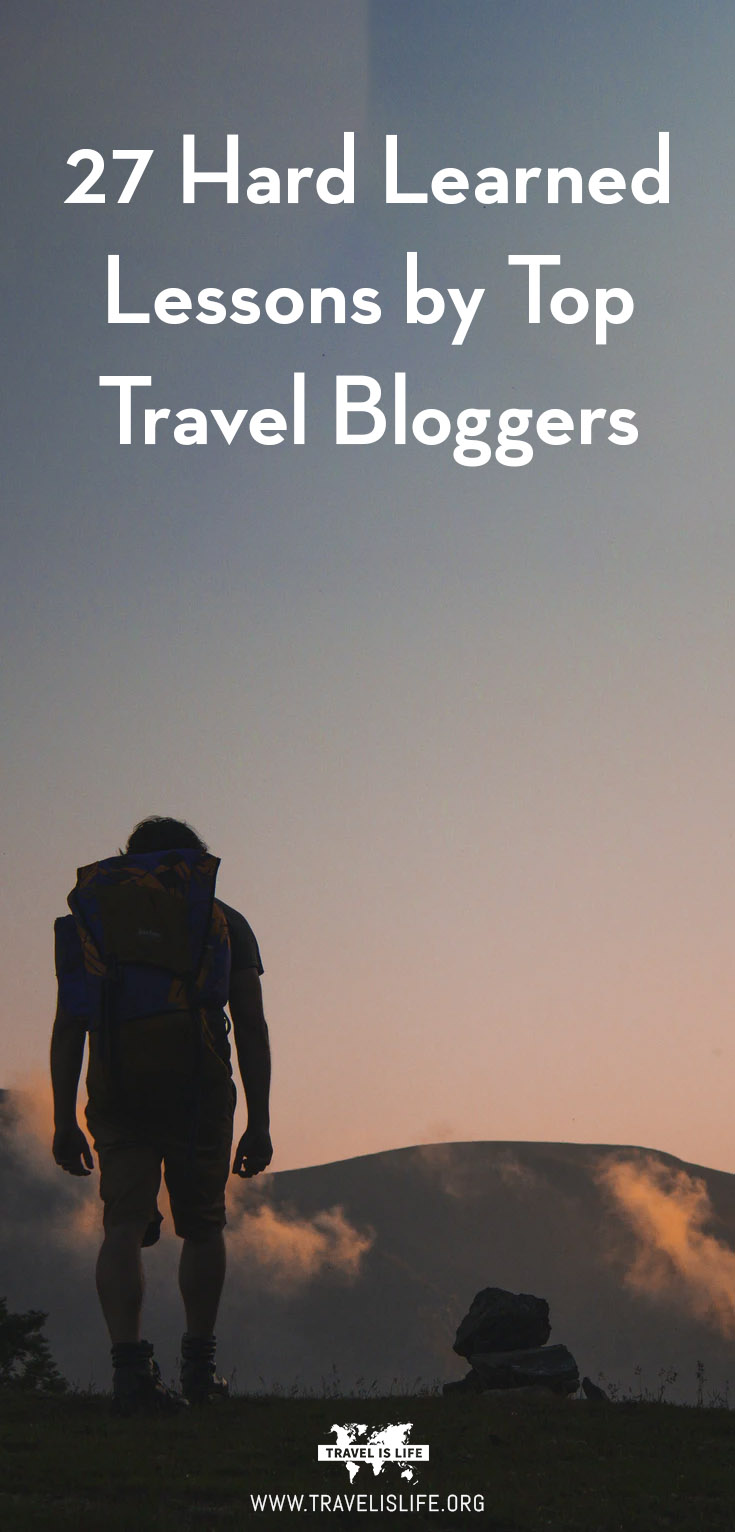
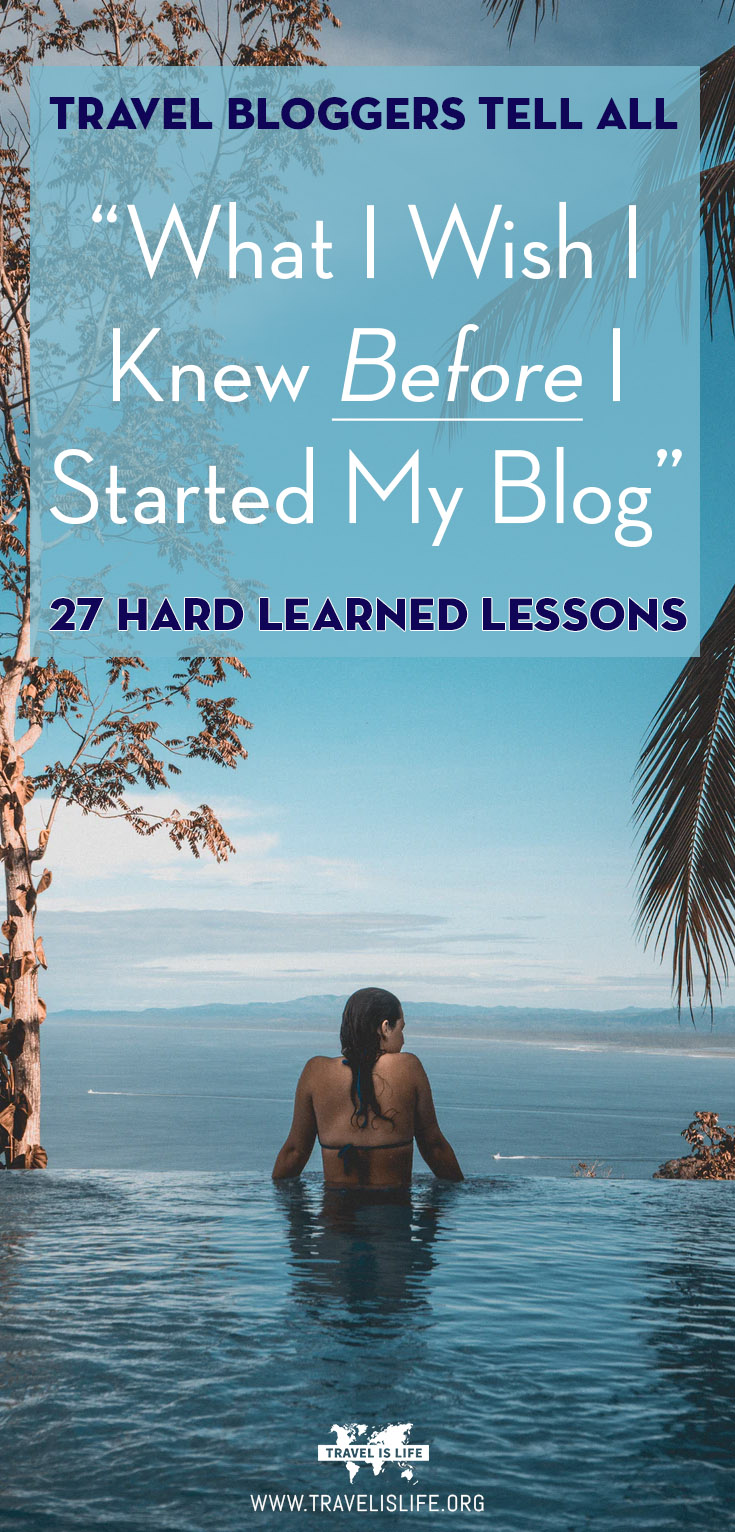
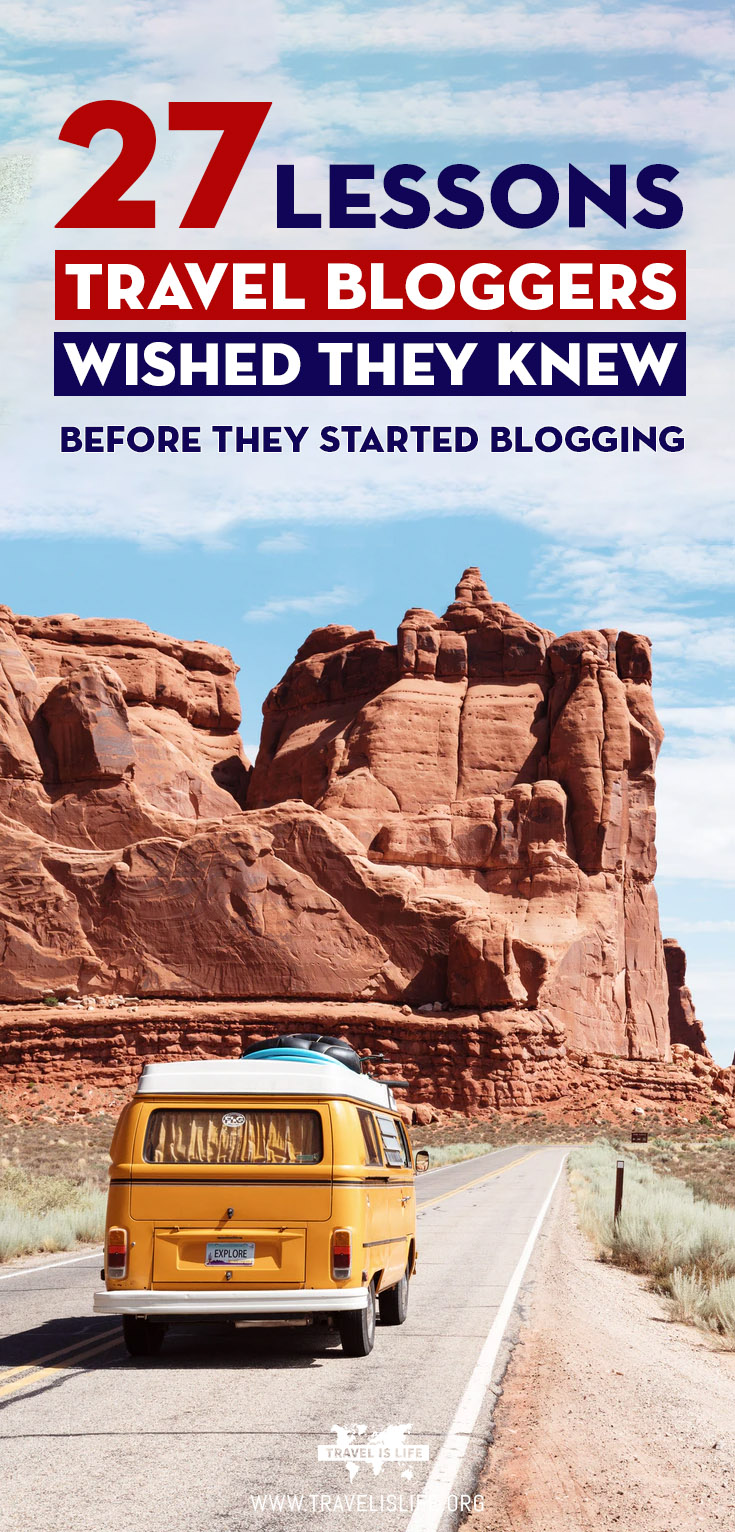

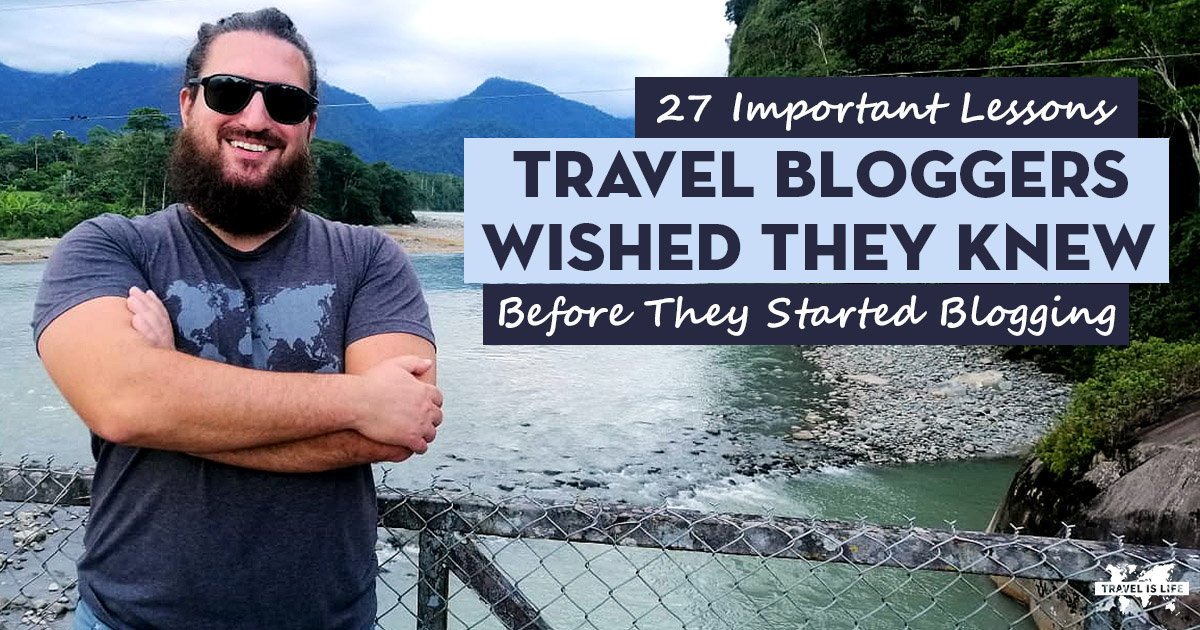
0 Comments